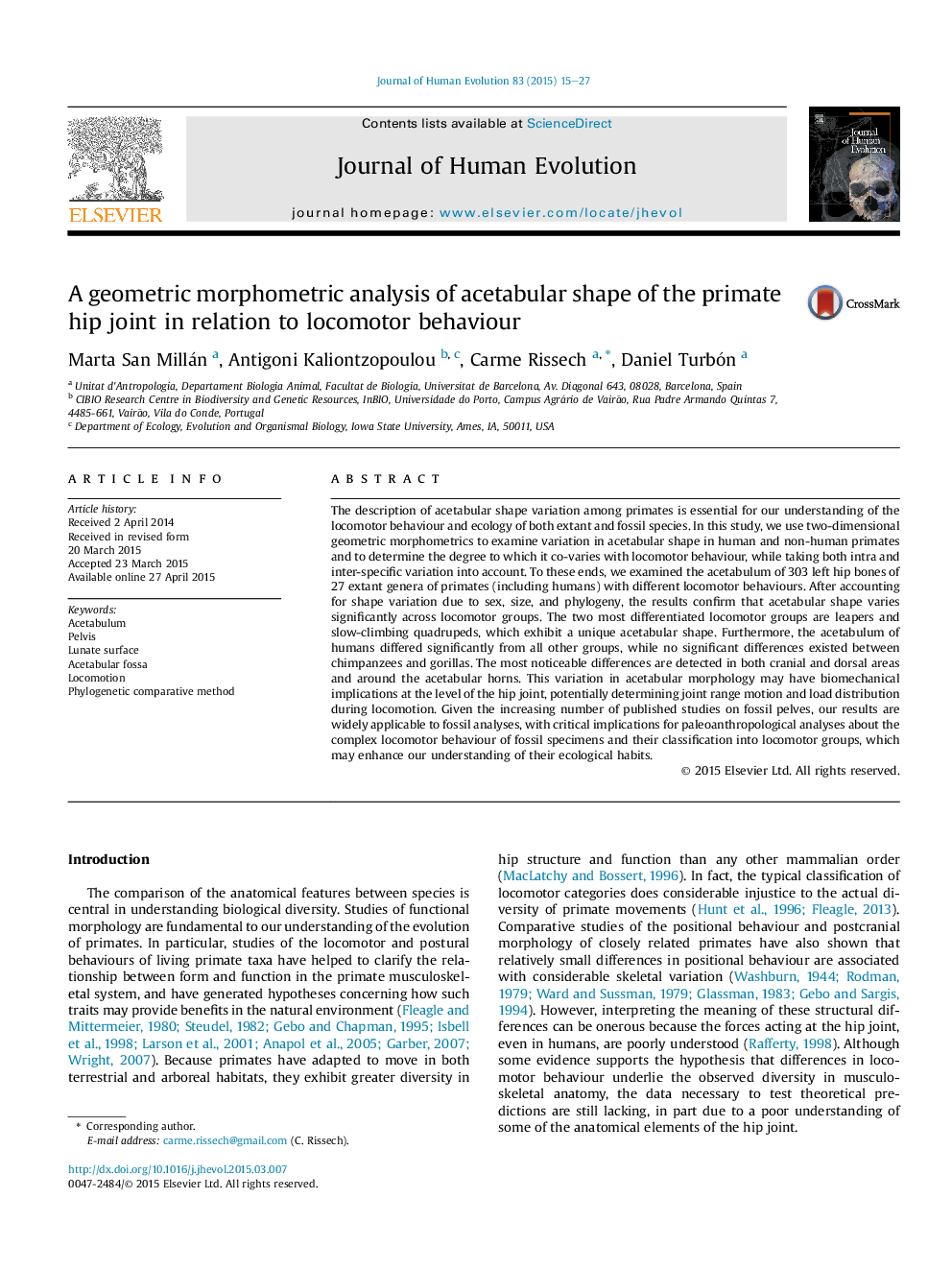| کد مقاله | کد نشریه | سال انتشار | مقاله انگلیسی | نسخه تمام متن |
|---|---|---|---|---|
| 4555945 | 1628166 | 2015 | 13 صفحه PDF | دانلود رایگان |
The description of acetabular shape variation among primates is essential for our understanding of the locomotor behaviour and ecology of both extant and fossil species. In this study, we use two-dimensional geometric morphometrics to examine variation in acetabular shape in human and non-human primates and to determine the degree to which it co-varies with locomotor behaviour, while taking both intra and inter-specific variation into account. To these ends, we examined the acetabulum of 303 left hip bones of 27 extant genera of primates (including humans) with different locomotor behaviours. After accounting for shape variation due to sex, size, and phylogeny, the results confirm that acetabular shape varies significantly across locomotor groups. The two most differentiated locomotor groups are leapers and slow-climbing quadrupeds, which exhibit a unique acetabular shape. Furthermore, the acetabulum of humans differed significantly from all other groups, while no significant differences existed between chimpanzees and gorillas. The most noticeable differences are detected in both cranial and dorsal areas and around the acetabular horns. This variation in acetabular morphology may have biomechanical implications at the level of the hip joint, potentially determining joint range motion and load distribution during locomotion. Given the increasing number of published studies on fossil pelves, our results are widely applicable to fossil analyses, with critical implications for paleoanthropological analyses about the complex locomotor behaviour of fossil specimens and their classification into locomotor groups, which may enhance our understanding of their ecological habits.
Journal: Journal of Human Evolution - Volume 83, June 2015, Pages 15–27
